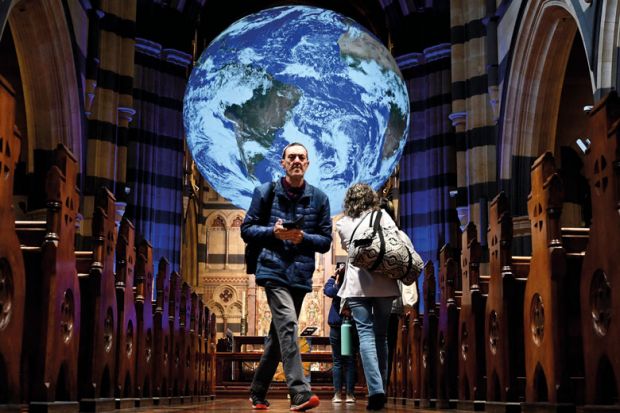Far from producing a clique of lookalike universities all aspiring to be like the University of Oxford, Australia’s unique higher education funding model has created a type of diversity “that nobody else thought was possible”, a Melbourne forum has heard.
Monash University vice-chancellor Margaret Gardner said Australia was the only country in the world where “a very large proportion” of domestic students could learn in elite research universities. And its institutions were “so diverse internally” that domestic students could learn alongside peers from a wide array of nationalities and ethnicities.
Professor Gardner credited both these features to Australia’s flourishing international education industry, which she said was the most diverse aspect of university operations. “It is the completely market-facing part of what the universities do, in what is ostensibly a public system,” she told a University of Melbourne seminar. “They are more diverse in the way they pursue their international education aims than they are in their domestic settings.
“We keep treating [international education] like it’s some sort of add-on. No, it’s fundamentally changed what we do.”
The forum examined the “big challenges” facing Australian higher education following the May federal election and the reopening of campuses after coronavirus lockdowns. Principal among these challenges is how to restore overseas enrolments to pre-pandemic levels while reducing the sector’s reliance on the fees from foreign students – particularly those from the big markets of China and India.
In a scathing denouncement, Swinburne University’s French-born vice-chancellor Pascale Quester said Australian universities had become hooked on international fees to bankroll their ambition of being “more or less like the traditional – and by that, read the English – model of university”.
“A pack of 40 or so universities continue to aspire – for reasons that I cannot quite fathom – to mimic institutions that were invented in medieval times…to serve a very tiny aristocratic minority that was entirely dedicated to the pursuit of totally unproductive pastimes like hunting and politics and, from time to time, going to war with the French. Somehow, someone thought this was a good model for Australia.”
Professor Quester said Australian universities had become caught in a “vicious circle” that required them to increase their research capacity to boost their world rankings, so that they could recruit more overseas students to generate the cash to invest more in research. In the process they had “neglected teaching and learning” and “lost much of their social licence”, she argued.
She said Victoria had enough “mega-multidisciplinary” institutions like Monash and the University of Melbourne. “Swinburne’s way forward is not to grow to be like them. It’s precisely to avoid becoming like them so that we can play a different part and fulfil a different ecological niche.”
Professor Gardner bristled at suggestions that large institutions were unresponsive, citing Monash’s establishment of the first foreign-owned university in Indonesia. “You think we aren’t agile? How many times have Australian universities been the first ones in when the new opportunities arose?”
While acknowledging universities’ financial reliance on international education, she also credited it for sharpening their ability to teach diverse classes and educate people from around the world.
“It’s as fundamental to the universities and to Australia as exporting our agricultural and mineral product,” she said. “People don’t want to quite say that, but it’s true.”




